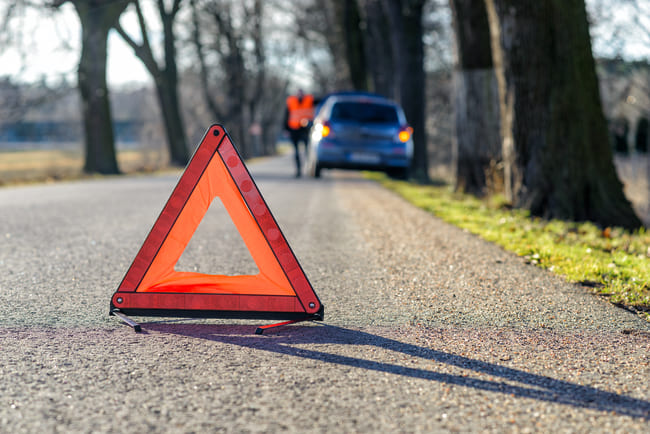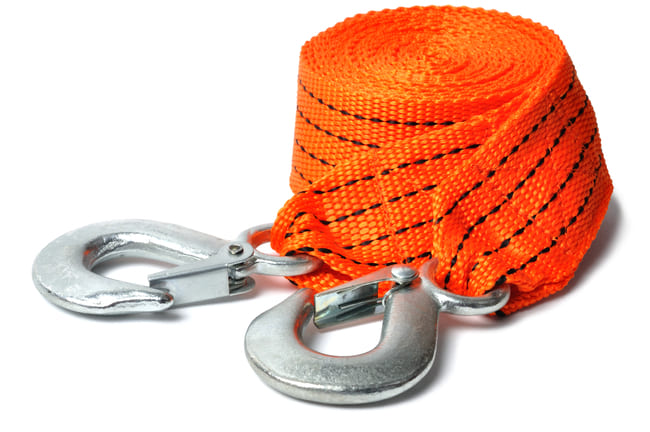
There are a variety of reasons why you would want to have a car towed or towed to let. This includes the engine failing and also getting your vehicle stuck. We give you answers to the question: „What should be considered when towing a car?“. In addition, we will help you with information about towing costs if you have your car towed. Basically, when towing a car, there is the possibility of doing this with the help of a rope or a rod. Both methods have certain advantages and disadvantages, which we will discuss below.
Contents
- 1 Who can have his car towed. Can you tow a car?
- 1.1 Towing vehicles: What needs to be considered
- 1.2 What do you have to watch out for in vehicles with all-wheel drive and/or automatic transmission
- 1.3 What is the maximum permissible speed when towing a car
- 1.4 Where to find the towing eyes and how to connect the vehicles
- 1.5 Which is better for towing. A tow rope or tow bar
Who can have his car towed. Can you tow a car?

The road traffic regulations clearly state when a car may be towed at all. Don't stick to it, threaten 70 in addition to a point in the Flensburg traffic offender file€ fine. For example, it is forbidden to tow away a car that is no longer registered in order to have it scrapped. Even a tank that you have run dry yourself is not an accepted justification. Towing of motorcycles is also always prohibited. However, a car may be towed if it is technically defective and there is no prospect of repairing it on the spot.
Towing vehicles: What needs to be considered
First of all, you should decide whether you want to have your vehicle towed or lend a hand yourself. If you opt for the latter, you will need a suitable towing vehicle as well as a tool such as a tow bar or a tow rope including a red flag to securely connect the two vehicles. On the other hand, if you have your vehicle towed, you should make sure when signing the towing order that the warranty for damage to your vehicle is not excluded. Otherwise you may end up with high costs if something goes wrong.
The driver of the towed car (both vehicles must be occupied) should have sufficient strength, because the power steering only provides support when the engine is running. Despite everything, you should switch on the ignition so as not to risk suddenly engaging the steering wheel lock when towing. In addition, it is mandatory to switch on the hazard warning lights on both vehicles. It is interesting, however, that the German road traffic regulations only specify a minimum age of 15 years for the driver of the car to be towed. Even without a driver's license you can be part of the towing of a car – but of course only in the towed vehicle.

Please also keep in mind that the rear vehicle does not benefit from the work of the brake booster either. For this reason, it is advisable to agree on a sign for braking. In this way, the rear driver can start braking first and rear-end collisions are prevented as consistently as possible. Of course, this problem primarily arises when using a tow rope, because a tow bar is initially a rigid connection. The latter, like a tow rope, must be marked with a red flag in the middle. In general, the tow rope used must not exceed a length of 5 meters.
What do you have to watch out for in vehicles with all-wheel drive and/or automatic transmission

Before you start towing such cars or have them towed, it is imperative to read the technical manual beforehand. Some specific vehicle models have clearly marked tow buttons, others require specific preparation, and some models may not be towed at all. Failure to take appropriate precautions can result in transmission and/or engine damage. You can find more detailed information in your vehicle handbook or from the vehicle manufacturer.
What is the maximum permissible speed when towing a car
In general, it is Maximum speed for car towing 50 km/h. However, depending on the route and the condition of the road, it is by no means advisable to drive faster than 30km/h or faster than about 40 km/h on wide and open country roads. This is a common sense dictate you should abide by.
Where to find the towing eyes and how to connect the vehicles

There are still fixed towing eyes on older vehicles or, exceptionally, on some newer model variants. This can then be found both on the back of the vehicle (if you want to tow another vehicle) and on the front of the car. However, the rule is now that a towing eye is supplied with the car to screw it in. You can usually find this on your jack. In order to mount these, a corresponding cover often has to be removed in the area of the bumper(s). make sure that you always screw in the towing eyes firmly so that they cannot come loose on the way.
Which is better for towing. A tow rope or tow bar

Both systems have their advantages and disadvantages. While you can simply carry a tow rope with you in the vehicle to save space (it can be easily rolled up), you will generally not always leave a tow bar in the vehicle. In addition, a rope is less subject to corrosion. However, you should forget that being towed with a tow bar is much more pleasant and easier. Rear-end collisions are rare and you don't always have to pay attention to tension like you would with a rope (so that it jerks as little as possible when towing). The fact that the brake booster does not work is also less important with a tow bar. In general, we therefore only advise experienced drivers to use a tow rope.
Conclusion
Having a car towed can be associated with certain costs. For this reason, it can be worth taking responsibility for towing. However, there are a few pitfalls to avoid and a whole range of specifications and regulations to be observed. If you manage to do this, you can save yourself some costs.
A tip from CarTipsandmore:
Remember that the distance you are allowed to tow yourself is not is infinitely long. So it is not a good idea to try to tow a vehicle from Nuremberg to Bremen. You must always leave the motorway as quickly as possible and you are also not allowed to enter the motorway with a vehicle that is to be towed. The goal must always be the nearest specialist workshop that can help you.
